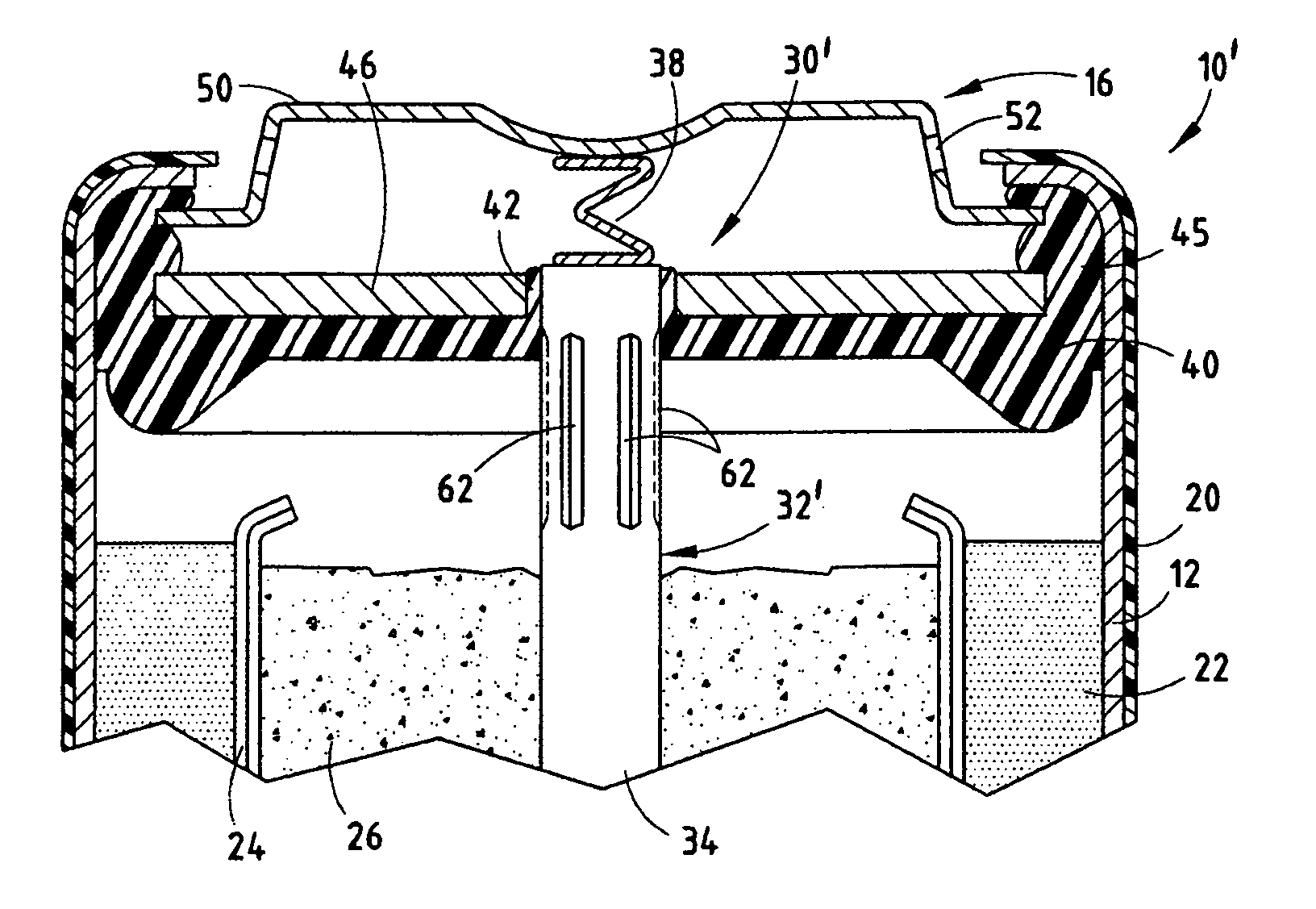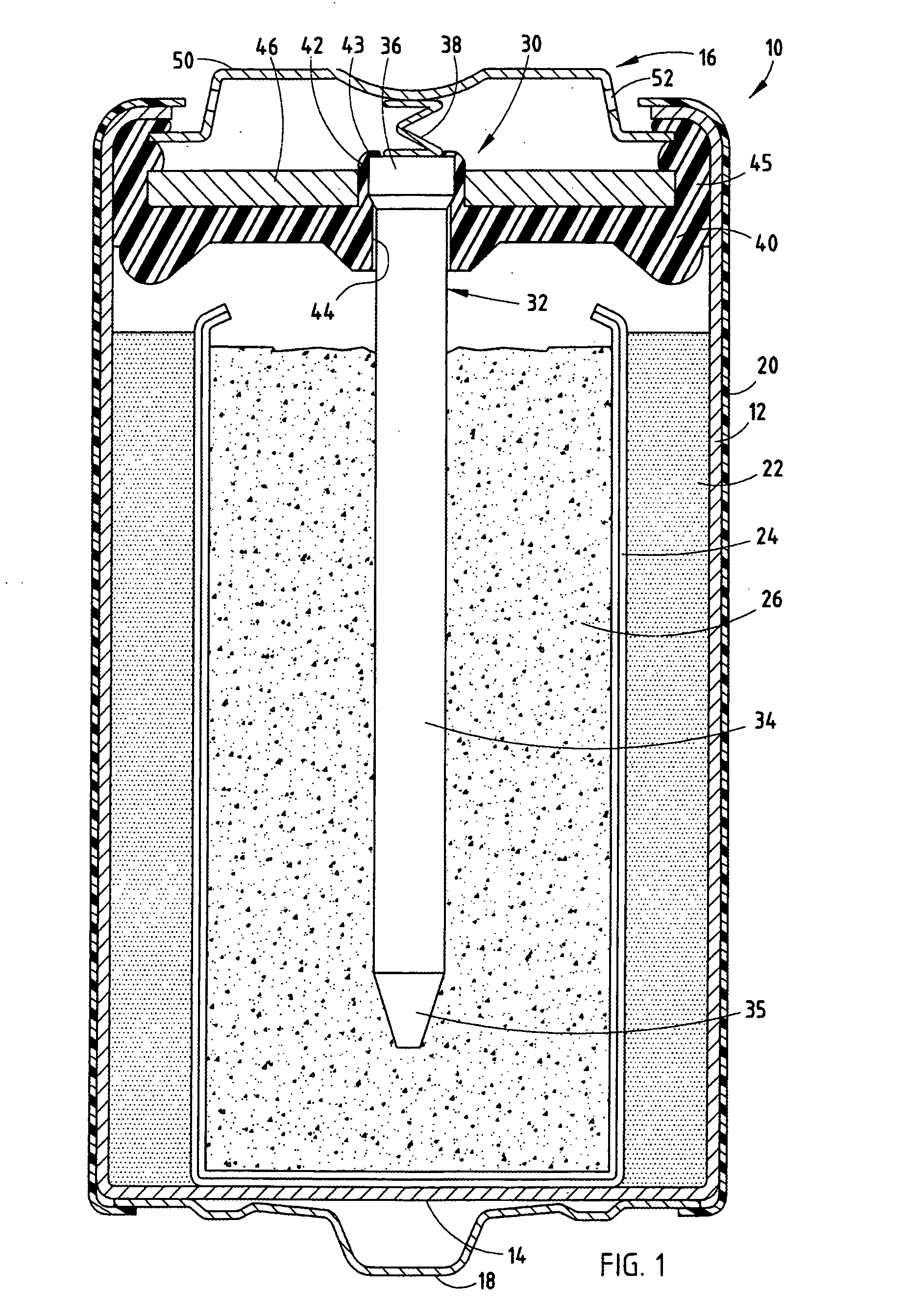Electrochemical cell having venting current collector and seal assembly
a current collector and electrochemical technology, applied in the field of electrochemical cells, can solve the problems of complex seal design, system requirements for additional costly components, damage to the cell and/or the device in which the cell is used, etc., and achieve the effect of improving protection safeguards and low profil
- Summary
- Abstract
- Description
- Claims
- Application Information
AI Technical Summary
Benefits of technology
Problems solved by technology
Method used
Image
Examples
Embodiment Construction
[0025] Referring to FIG. 1, a cylindrical alkaline electrochemical cell 10 is shown having a collector and seal assembly 30 according to a first embodiment of the present invention. Electrochemical cell 10 includes a cylindrical steel can 12 having a closed bottom end 14, an open top end 16, and a cylindrical side wall extending between the bottom and top ends. The closed bottom end 14 of can 12 has a positive cover welded or otherwise attached thereto and formed of plated steel, with a protruding nubbin 18 at its center region, which forms the positive contact terminal of cell 10. Assembled to the open top end 16 of steel can 12 is the collector and seal assembly 30, and an outer negative cover 50, preferably formed of plated steel, which forms the negative contact terminal of cell 10. A metalized, plastic film label 20 is formed about the exterior surface of steel can 12, except for the ends of steel can 12. Film label 20 is formed over the peripheral edge of the positive cover an...
PUM
| Property | Measurement | Unit |
|---|---|---|
| pressure | aaaaa | aaaaa |
| width | aaaaa | aaaaa |
| compressed area | aaaaa | aaaaa |
Abstract
Description
Claims
Application Information
 Login to View More
Login to View More - R&D
- Intellectual Property
- Life Sciences
- Materials
- Tech Scout
- Unparalleled Data Quality
- Higher Quality Content
- 60% Fewer Hallucinations
Browse by: Latest US Patents, China's latest patents, Technical Efficacy Thesaurus, Application Domain, Technology Topic, Popular Technical Reports.
© 2025 PatSnap. All rights reserved.Legal|Privacy policy|Modern Slavery Act Transparency Statement|Sitemap|About US| Contact US: help@patsnap.com



